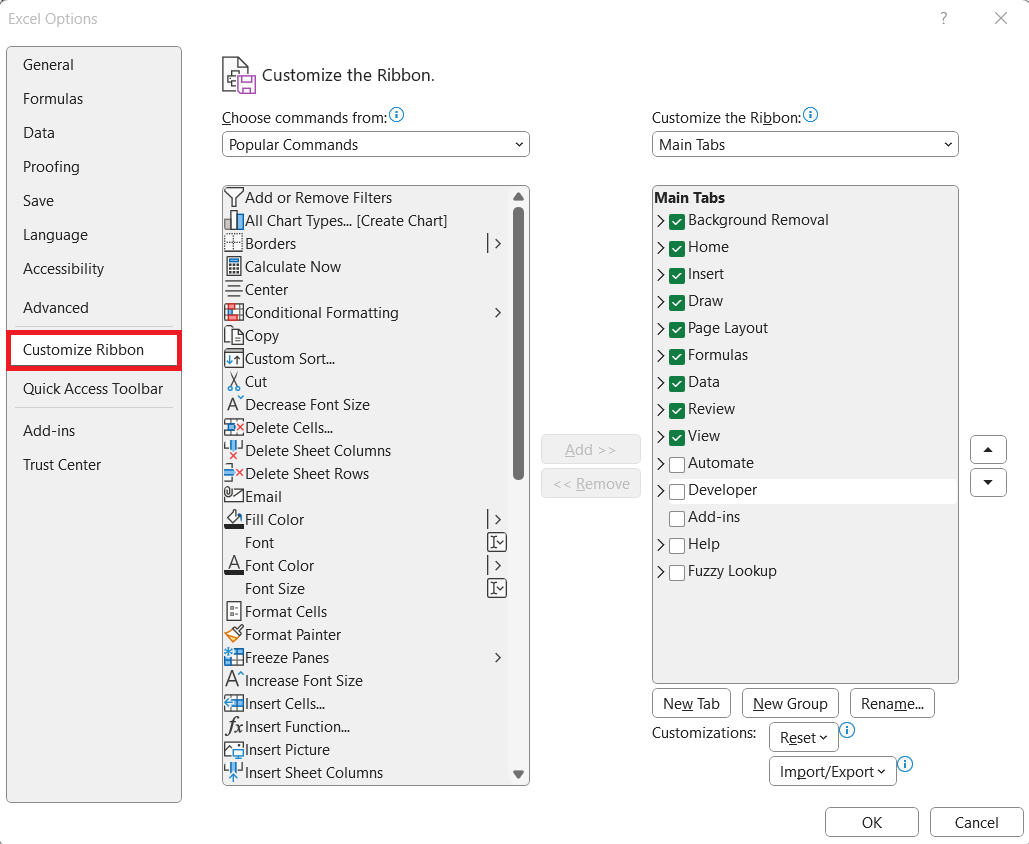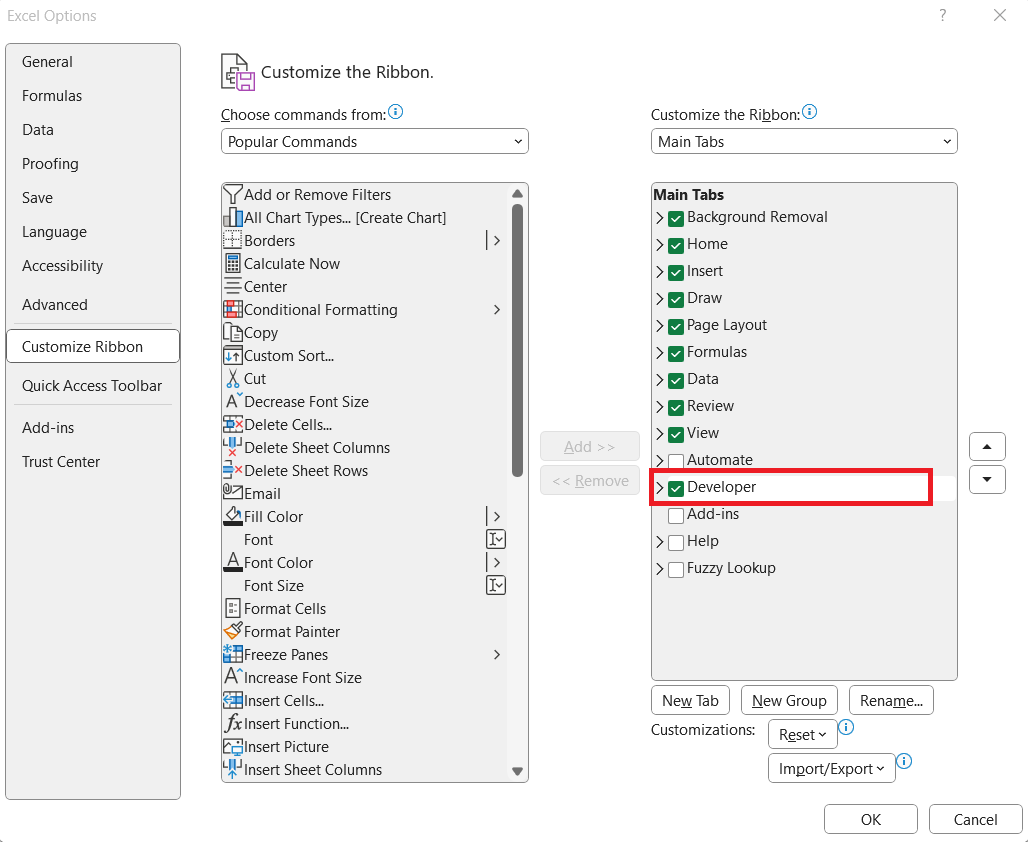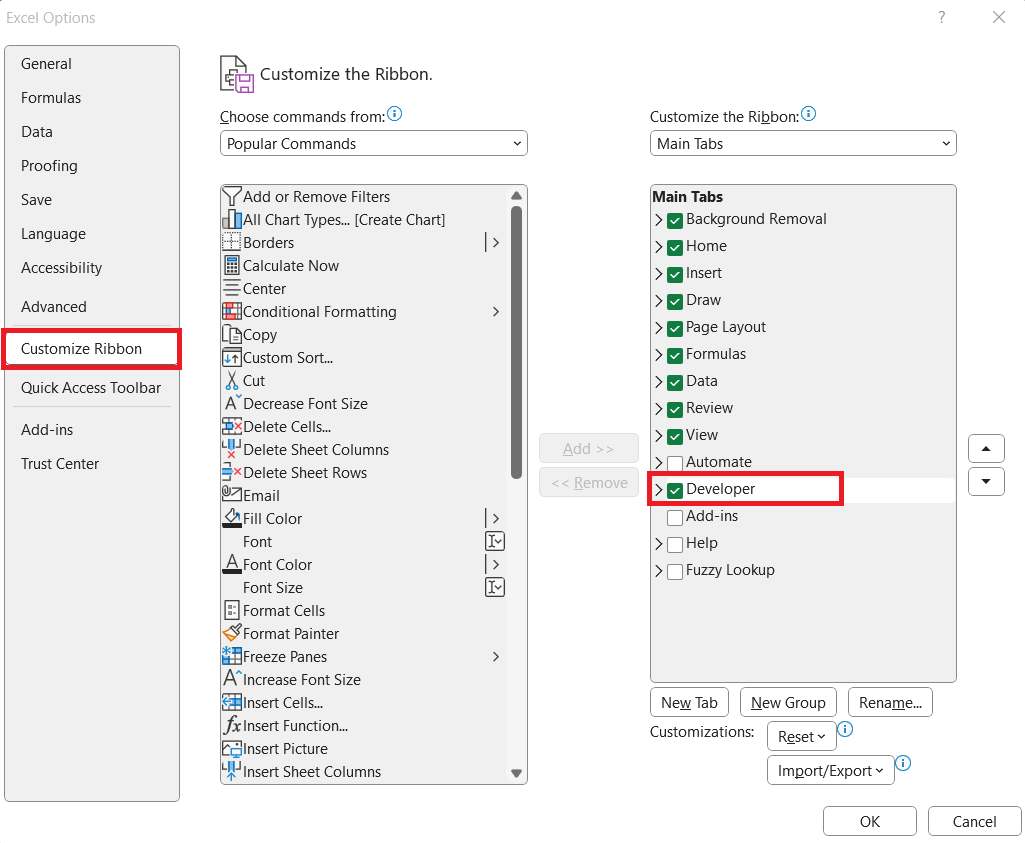In my experience with Excel, one of the most powerful yet underutilized features is the Developer tab. This hidden gem offers a range of tools that can significantly enhance how we interact with and customize our spreadsheets. From creating macros to designing user forms and accessing advanced options, the Developer tab opens up a whole new world of possibilities. In this article, I’ll walk you through how to enable and use the Excel Developer tab to streamline your workflow and boost your productivity.
Key Takeaways:
- Unlock Advanced Tools: The Developer tab in Excel provides access to powerful features like VBA, macros, and add-ins that are essential for advanced spreadsheet customization and automation.
- Enable Easily: You can activate the Developer tab by going to Excel Options, selecting Customize Ribbon, and checking the Developer box—no technical expertise required.
- Automate Tasks: Use macros and VBA to automate repetitive tasks, saving time and reducing the chance of errors in your workflow.
- Create Interactive Elements: The tab allows you to add form controls and ActiveX controls to build interactive forms and dashboards for enhanced data visualization and user engagement.
- Manage External Data: Utilize XML tools and add-ins to integrate and manage external data efficiently, improving your data analysis and reporting capabilities.
Table of Contents
Introduction to the Excel Developer Tab
Understanding the Developer Tab
The Developer tab in Excel is a special feature that provides access to a variety of advanced tools and functionalities. It’s designed for users who need to create or work with complex spreadsheets, automate tasks, and develop custom solutions. By default, the Developer tab is hidden, but it can be easily enabled to unlock its full potential.
The Developer Tab in Excel is a treasure trove of tools that are indispensable for those who aim to extend the capabilities of their spreadsheets. To me, this tab feels like a secret passage to Excel’s engine room, where the real magic happens.
Why You May Need the Developer Tab
Understanding the numerous benefits of the Developer Tab is key to leveraging Excel to its full potential. For instance, we may need it to automate repetitive tasks, which is particularly handy with the use of macros. Imagine the time saved by having complex calculations or data entry handled with the click of a button.
It’s also essential for creating forms with checkboxes, dropdowns, and buttons that can make data entry by users a breeze. We might even craft interactive charts or dashboards with controls that allow viewers to filter and sort information on the fly, offering a dynamic way to present data.
For those enthralled by the potential of custom Excel functions or who routinely work with XML data, the Developer Tab is where we’ll find the necessary features to bring those to life. It’s an asset not just for developers, but for any Excel user aiming for efficiency and precision in their work.
Step-by-Step Guide to Adding the Developer Tab
Accessing Excel Options for Customization
Accessing Excel Options is vital to personalizing Excel and tailoring it to our workflows. From adjusting the default number of sheets in a new workbook to fine-tuning the calculation modes and formulas, it is the go-to place for customization. I find it incredibly straightforward—
STEP 1: Click on the File tab and select Options.
STEP 2: In the Excel Options window, select Customize Ribbon from the list on the left.
STEP 3: Check the box next to Developer in the right pane and click OK.
You should now see the Developer tab in the Excel ribbon.
Enabling the Developer Tab in the Ribbon
Enabling the Developer Tab in the ribbon pours a wealth of advanced functionalities into our Excel toolkit. Here’s how we do it in a few simple steps:
With a quick right-click on the ribbon, select ‘Customize the Ribbon’ to open the Excel Options window.
From there, the ‘Customize Ribbon’ tab awaits on the left side. Once I locate the “Developer” checkbox in the Main Tabs list on the right side, I ensure it’s checked. Clicking “OK” seals the deal.
And just like that, the Developer Tab graciously appears in the ribbon.
It’s effortless, and the transformative power it unleashes is beneficial for anyone looking to dive deeper into Excel’s capabilities. I always remind myself and others not to be daunted by the term ‘Developer’. While the tab caters to more technical Excel features, exploring it can open up new possibilities for improving efficiency and automation in our work, even for less technical users.
Key Features of the Developer Tab
The Developer tab is packed with features that cater to different needs. Here are some of the key tools available:
- Visual Basic for Applications (VBA): This powerful programming language allows you to create custom functions, automate repetitive tasks, and develop complex applications. With VBA, you can write macros that perform specific actions within your spreadsheets, improving efficiency and productivity.
- Macros: Macros are sequences of instructions that automate repetitive tasks. The Developer tab provides options to record, run, and manage macros. This feature is particularly useful for users who need to perform the same set of actions frequently.
- Add-ins: Excel add-ins are supplementary tools that extend the functionality of Excel. The Developer tab lets you manage existing add-ins or install new ones, enabling you to customize your Excel environment to suit your specific needs.
- Form Controls and ActiveX Controls: These controls allow you to create interactive elements in your spreadsheets, such as buttons, drop-down lists, and checkboxes. Form Controls are simpler and more user-friendly, while ActiveX Controls offer more customization options and flexibility.
- XML Tools: For users working with XML data, the Developer tab includes tools for importing, exporting, and managing XML files. These tools facilitate the integration of XML data with Excel, making it easier to work with structured data formats.
- Document Properties: This feature allows you to manage metadata associated with your Excel workbooks, including author information, document title, and other properties.
- Code and Debugging Tools: The Developer tab provides access to various tools for coding and debugging VBA scripts. You can use the Visual Basic editor to write and test your code, set breakpoints, and step through your scripts to identify and resolve issues.
Practical Applications of the Developer Tab
- Automating Repetitive Tasks: Use macros and VBA to automate tasks such as data entry, formatting, and calculations, saving time and reducing the risk of errors.
- Creating Custom Functions: Develop custom Excel functions to perform specialized calculations that aren’t available in the standard function library.
- Building Interactive Dashboards: Utilize form controls to create interactive dashboards and user interfaces that enhance data visualization and user engagement.
- Integrating External Data: Leverage XML tools and add-ins to integrate and manage data from external sources, improving data analysis and reporting capabilities.
FAQ: Navigating the Excel Developer Tab with Ease
What is the developer tab?
The Developer Tab in Excel is a hub of powerful tools designed for advanced operations, mostly related to automation and customization. It enables us to create and access VBA (Visual Basic for Applications) macros, use ActiveX controls, design interactive forms, handle XML-related tasks, and work with add-ins. It’s like having a toolkit for enhancing and personalizing our spreadsheet capabilities to meet specialized requirements or streamline complex tasks.
What is the shortcut key for the Developer tab in Excel?
Unfortunately, there isn’t a default shortcut key assigned specifically for toggling the Developer Tab in Excel. However, once the Developer Tab is enabled, we can use ribbon keyboard shortcuts to access its features. We press the ‘Alt’ key to reveal key tips, then subsequent letters or numbers to navigate through the tab’s options.
How do I make the Developer Tab visible in Excel 365?
To make the Developer Tab visible in Excel 365, you need to click on the ‘File’ tab to open the backstage view, then select ‘Options’ which will open the Excel Options dialog box. Navigate to ‘Customize Ribbon’ and in the right pane, find and check the ‘Developer’ checkbox. Click on ‘OK’, and the Developer Tab will now appear in your main ribbon.
Can I customize the functions available on the Developer Tab?
Yes, absolutely. The functions on the Developer Tab can be customized to better suit our workflow. Within the ‘Customize Ribbon’ section of the Excel Options, we can add or remove commands, create new groups, or even rearrange existing functions to make the tab more intuitive for our use. It allows us to tailor the ribbon to our specific development needs or preferences, enhancing our efficiency.
What should I do if the Developer Tab is missing after an update?
If the Developer Tab is missing after an update, re-enabling it often solves the issue. Head to ‘File’, click ‘Options’, and in the ‘Customize Ribbon’ section, check if the Developer Tab is selected. If not, simply check it and press ‘OK’. If it’s checked but still not visible, there might be an issue with the update itself — try repairing your Office installation or consulting Microsoft Support for assistance.
John Michaloudis is a former accountant and finance analyst at General Electric, a Microsoft MVP since 2020, an Amazon #1 bestselling author of 4 Microsoft Excel books and teacher of Microsoft Excel & Office over at his flagship MyExcelOnline Academy Online Course.














